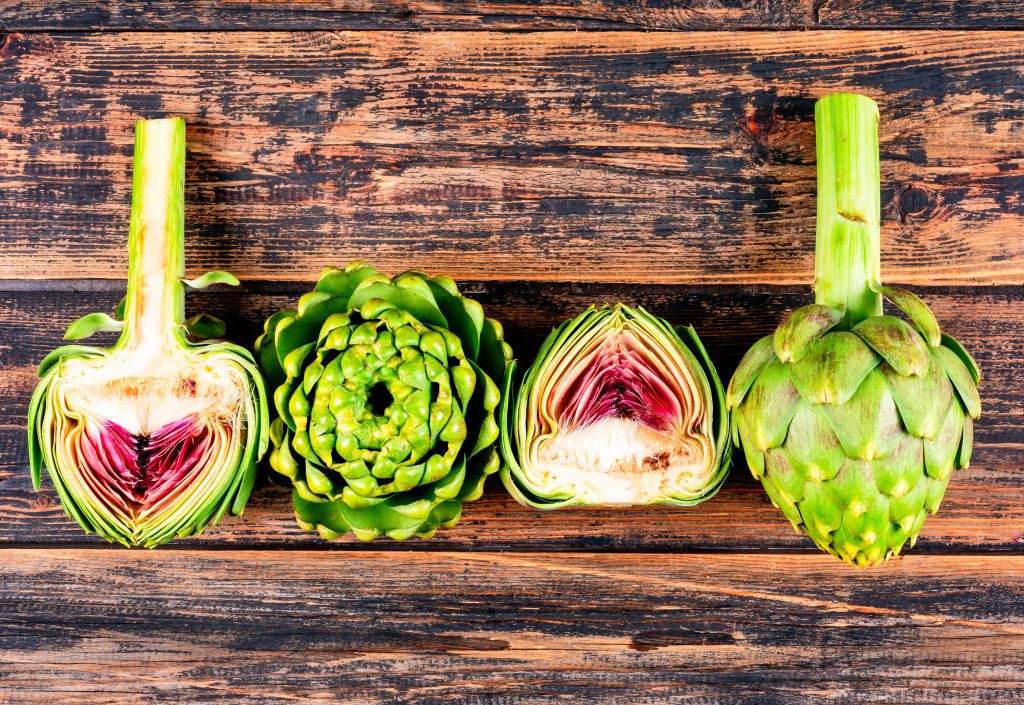All about artichokes

Artichokes are low in fat, rich in fiber and loaded with powerful nutrients. While canned artichokes are just as nutritious, fresh artichokes are fun to take apart and eat one leaf at a time, saving the delicious heart for last.
The artichoke can be a daunting vegetable with its prickly appearance, but it is like one of those familiar fairy-tale characters that are a bit frightening on the outside but ultimately contain an extraordinary heart.
This odd, spiky gift from nature is the surprising bud of a thistle that bears gorgeous purple-blue blossoms. The leaves, called bracts, cover a fuzzy center called the choke, which sits on top of a meaty, delicious core, called the heart. Artichokes are low in fat, rich in fiber and loaded with powerful nutrients.
Look for artichokes that feel heavy when you pick them up. The leaves should be closed with just a little separation, not flayed wide open. Since it is a flower bud, an artichoke’s leaves open as it ages. To prepare an artichoke, use kitchen scissors to cut off the thorny ends of the leaves, making the artichoke easier to handle. Slice off the very top with a serrated knife and remove any small leaves at the base. Rinse the artichoke in cold running water and open the leaves a little so the water gets inside more easily.
Artichokes can be baked, boiled, grilled, sautéed or stuffed, but steaming them provides the right amount of moisture. Aromatics such as garlic, lemon and a bay leaf can be added to the water before steaming. Cook for 25-35 minutes or longer, until the outer leaves can be easily pulled off. If you don’t have a steamer basket, try resting artichokes on a ball of tinfoil in the pot with water halfway up the sides of the artichokes. One resident said she wraps artichokes in wet paper towels and microwaves them for a few minutes.
Once cooked, try dipping each leaf in either melted butter, mayonnaise, a lemon aioli or a vinaigrette. Place the light end in your mouth and pull, scraping through your teeth to get both the dip and the meat of the leaves. Then, with a knife or spoon, scrape out and discard the inedible fuzzy part, the choke, thus uncovering the heart. Cut the heart into pieces, dip and enjoy. Delicious and interactive eating at its best.
Canned artichokes take all the work (and fun) out of dealing with fresh artichokes, but they have similar nutritional benefits. Rinse canned artichokes to lower the sodium content. Enjoy the extra flavor in marinated jarred artichokes which can be added to a salad, pizza or pasta dishes.
By Lisa Nicklanovich; courtesy photo